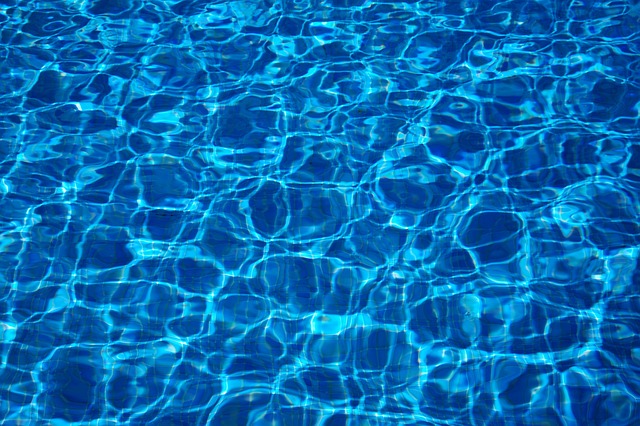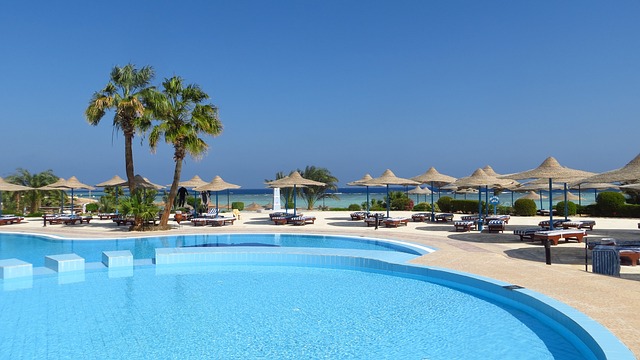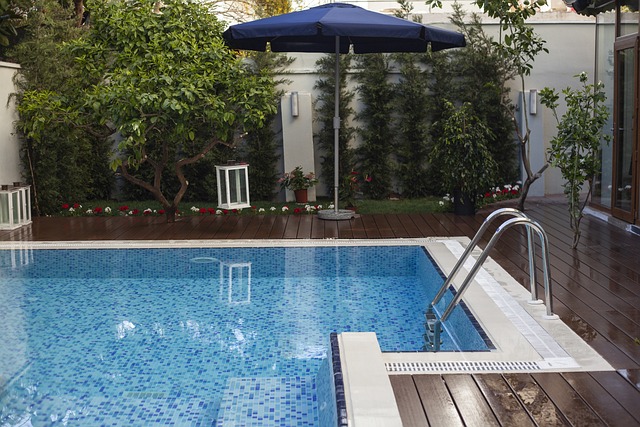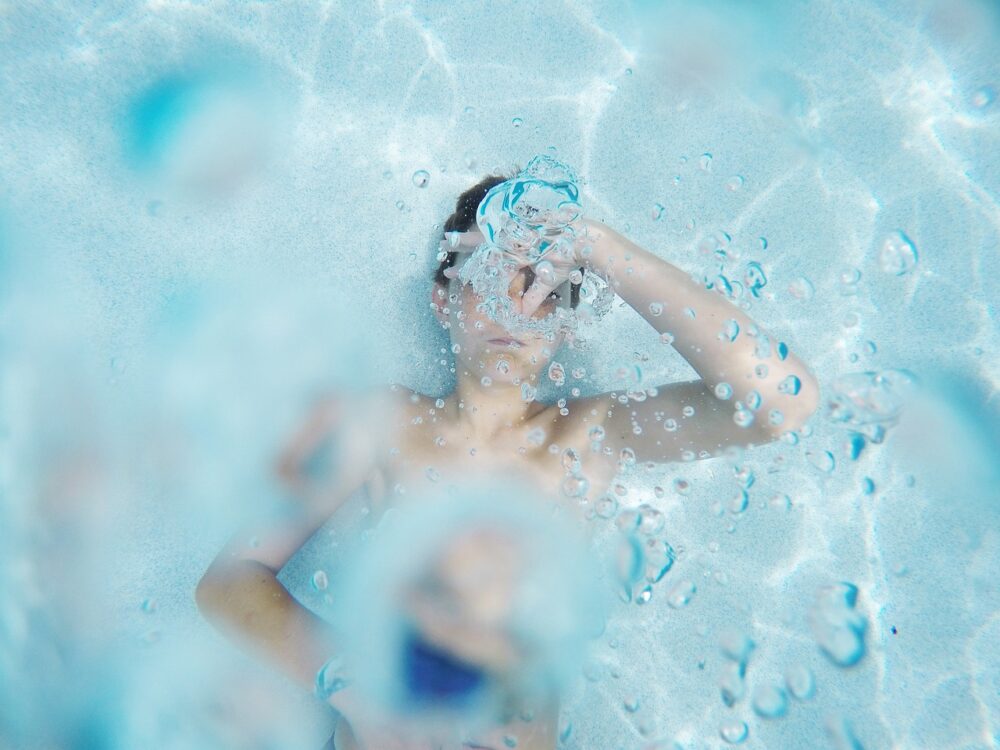Welcome to the comprehensive Oval Swimming Pool Design, Installation, and Maintenance Guide. In this guide, we will delve into the intricacies of designing, installing, and maintaining an oval-shaped swimming pool, equipped with valuable insights and technical knowledge to help you make informed decisions throughout the process. Designing an oval swimming pool requires meticulous planning and consideration of various factors to ensure a functional and aesthetically pleasing end result. The first step in the design process is selecting the appropriate location for the pool.
Factors such as sunlight exposure, proximity to utilities, and overall accessibility should be taken into account. Once the location is determined, it’s time to consider the pool’s dimensions. The oval shape offers a unique blend of elegance and functionality, with its elongated form allowing for ample swimming space. Consider the available area and determine the ideal length, width, and depth of your oval swimming pool, keeping in mind local building codes and safety regulations. Next, the selection of pool materials and finishes is crucial to achieve both durability and visual appeal. Fiberglass, concrete, and vinyl are popular choices for constructing oval swimming pools. Each material has its own advantages and considerations, such as maintenance requirements and cost. Additionally, selecting a suitable interior finish, such as tiles or plaster, can greatly enhance the pool’s overall aesthetics. During the installation phase, it is imperative to engage qualified professionals with expertise in pool construction.
The installation process involves excavation, laying the foundation, constructing the walls, and installing the filtration and plumbing systems. Accurate measurements and precise execution are vital to ensure the pool’s structural integrity and proper functioning. Proper maintenance is essential for preserving the longevity and performance of your oval swimming pool. Regular cleaning and chemical balancing are paramount to keep the water clean, clear, and safe for swimming. Skimmers, filters, and pumps should be regularly inspected and maintained to ensure optimal filtration and circulation. It is advisable to establish a routine maintenance schedule and enlist the services of experienced pool technicians to conduct periodic inspections and address any potential issues promptly. To enhance the overall experience and safety of your oval swimming pool, consider incorporating additional features and accessories. These may include water features like fountains or waterfalls, lighting systems for ambiance and nighttime swimming, pool covers for protection and heat retention, as well as safety measures like fencing and alarms. In conclusion, the Oval Swimming Pool Design, Installation, and Maintenance Guide provides invaluable insights into creating a well-designed, properly installed, and meticulously maintained oval swimming pool. By carefully considering the various aspects discussed in this guide, you can ensure a seamless process from the initial design stages to ongoing maintenance, resulting in a stunning oval swimming pool that provides years of enjoyment for you, your family, and friends.
Please note that while this guide offers a comprehensive overview, it is always recommended to consult with professionals and local experts to address specific considerations and regulations in your area. Happy swimming! Please note that while this guide offers a comprehensive overview, it is always recommended to consult with professionals and local experts to address specific considerations and regulations in your area. Their expertise will ensure that your oval swimming pool is designed, installed, and maintained to the highest standards, providing a safe and enjoyable aquatic experience for years to come. Happy swimming!
What are the advantages of an oval swimming pool?
When it comes to swimming pools, the oval shape offers numerous advantages that make it a popular choice among homeowners. In this article, we will explore the benefits of an oval swimming pool, focusing on its design, installation, and maintenance aspects. Whether you are considering building a new pool or upgrading your existing one, understanding these advantages will help you make an informed decision.
- Space Efficiency:
One significant advantage of an oval swimming pool is its space-efficient design. With its elongated shape, an oval pool maximizes the available area, allowing you to make the most of your backyard space. The symmetrical layout of the oval pool also ensures balanced water circulation, creating a harmonious environment for swimming and other water activities. - Enhanced Aesthetics:
Oval swimming pools are aesthetically pleasing and can effortlessly enhance the overall look of your outdoor space. The elongated shape provides a visually appealing focal point, creating a sense of elegance and sophistication. Whether you have a modern or traditional landscape design, an oval pool seamlessly integrates into various architectural styles, complementing the surrounding environment. - Versatility in Design Options:
Another advantage of oval swimming pools is the versatility they offer in terms of design options. The elongated shape allows for creative customization, enabling you to incorporate various features and accessories to personalize your pool. From adding waterfalls, spas, or custom lighting to incorporating tanning ledges or swim-up bars, an oval pool can be transformed into a luxurious oasis tailored to your specific preferences. - Easy Installation:
Oval swimming pools are relatively easier to install compared to complex shapes such as kidney or freeform pools. The uniform shape and simple curves of an oval pool facilitate a streamlined installation process. This not only saves time but also reduces the overall installation costs, making it a cost-effective choice for homeowners. - Efficient Water Circulation:
The elongated shape of an oval pool contributes to efficient water circulation. The continuous flow of water along the length of the pool promotes better filtration and chemical distribution. This enhances water quality and reduces the chances of stagnation or uneven distribution of pool chemicals. The improved water circulation also results in a more comfortable swimming experience. - Safety Features:
Oval swimming pools offer excellent safety features compared to other pool shapes. The absence of sharp corners reduces the risk of accidents, especially for families with children. Additionally, oval pools can be equipped with various safety measures such as pool covers, alarms, and fencing to provide an added layer of protection. - Ease of Maintenance:
Maintenance is a crucial aspect of owning a swimming pool, and oval pools are designed to simplify this process. The uniform shape makes cleaning easier, as there are no hard-to-reach corners. Additionally, the balanced water circulation and efficient filtration system help maintain water clarity and reduce the need for excessive chemical treatments. This translates to less time spent on maintenance and more time enjoying the pool.

How to design an oval swimming pool for your backyard?
Designing an oval swimming pool for your backyard requires careful planning and consideration of various technical aspects. In this guide, we will explore the essential steps involved in designing an oval swimming pool that not only enhances the aesthetic appeal of your backyard but also provides an enjoyable swimming experience. Let’s dive in!
- Assess Your Backyard:
Before starting the design process, evaluate your backyard space to determine the ideal location for the oval swimming pool. Consider factors such as sunlight exposure, wind patterns, existing landscaping, and proximity to utilities. Additionally, check for any potential obstacles like underground pipes or cables that may affect the pool’s installation. - Determine the Pool Size:
The size of your oval swimming pool should be based on the available space and your personal preferences. Measure the dimensions of your backyard accurately to determine the maximum length and width for the pool. Oval pools typically range in size from 16 feet by 32 feet to 20 feet by 40 feet, but you can customize it to fit your specific requirements. - Choose the Pool Material:
When it comes to materials, there are several options available for constructing an oval swimming pool. Fiberglass, concrete, and vinyl are popular choices. Fiberglass pools are preformed shells that are durable, low-maintenance, and quick to install. Concrete pools offer flexibility in design but require longer construction time and regular maintenance. Vinyl pools feature a vinyl liner that provides a smooth finish and is relatively easy to maintain. - Select the Pool Features:
Consider the desired features and accessories to enhance your oval swimming pool’s functionality and aesthetics. Options include built-in steps or ladders, diving boards, water slides, integrated spa areas, and custom lighting. Plan the placement of these features to ensure they harmonize with the overall design and maximize your pool experience. - Plan the Deck Area:
Incorporating a deck area around your oval swimming pool can provide space for lounging, entertaining, and easy access. Choose suitable materials for your deck, such as concrete, natural stone, or composite decking, that are slip-resistant, durable, and complement the pool design. Ensure that the deck is properly sloped to allow for water drainage. - Consider Safety Measures:
Safety should be a top priority when designing an oval swimming pool. Install appropriate safety features, such as pool fences, gates, and alarms, to prevent accidents and ensure compliance with local regulations. Additionally, consider non-slip surfaces around the pool area and adequate lighting for nighttime use. - Consult with Professionals:
To ensure a successful oval swimming pool design, it is advisable to consult with professionals, such as pool designers, architects, and contractors. They can provide valuable insights, assist with obtaining necessary permits, and guide you through the entire design and construction process. - Maintenance and Upkeep:
Once your oval swimming pool is designed and installed, regular maintenance is essential to keep it in optimal condition. Establish a maintenance routine that includes cleaning the pool, balancing water chemistry, inspecting equipment, and winterizing the pool when necessary. Proper maintenance will prolong the lifespan of your pool and ensure a safe and enjoyable swimming environment.

What are the best materials for constructing an oval swimming pool?
When it comes to constructing an oval swimming pool, selecting the right materials is crucial to ensure its durability, functionality, and overall aesthetics. In this guide, we will explore the best materials commonly used in the construction of oval swimming pools. By understanding the characteristics and benefits of each material, you can make an informed decision for your oval pool project.
- Concrete:
Concrete is a widely preferred material for building oval swimming pools due to its versatility, strength, and durability. It offers excellent customization options, allowing you to create unique designs and shapes. Concrete pools are constructed by building a steel or wooden framework, which is then sprayed with a mixture of concrete, sand, and water known as shotcrete or gunite. This technique provides a solid structure capable of withstanding various weather conditions and soil types. Additionally, concrete allows for the integration of various features such as waterfalls, steps, and benches. - Fiberglass:
Fiberglass is another popular material for oval swimming pool construction. Fiberglass pools are pre-fabricated in a factory and then transported to the installation site. The pool shell is made from layers of fiberglass reinforced with polyester resin. This construction method ensures a smooth and non-porous surface, reducing the chances of algae growth and minimizing maintenance requirements. Fiberglass pools offer quick installation, as the shell arrives in one piece and is simply placed into a pre-dug hole. They also provide excellent durability and flexibility, with some manufacturers offering a variety of shapes and sizes to suit different preferences. - Vinyl:
Vinyl is a cost-effective material commonly used in oval swimming pool construction. Vinyl pools are constructed by excavating a hole and installing a steel or polymer panel wall structure. The interior surface is then lined with a vinyl liner, which is secured to the walls and floor. Vinyl liners come in various patterns and colors, allowing for customization and personalization. While vinyl pools are generally more affordable than concrete or fiberglass options, they may require periodic liner replacements, typically every 10 to 15 years. However, proper maintenance and regular inspections can help prolong the lifespan of the liner. - Natural Stone:
For those seeking a luxurious and elegant look, natural stone can be an excellent choice for oval swimming pool construction. Natural stone materials such as granite, limestone, or travertine can be used to create stunning pool decks, coping, and accents. These materials are known for their durability, aesthetic appeal, and ability to withstand harsh weather conditions. Natural stone can be cut and shaped into various sizes and finishes, providing endless design possibilities for your oval pool. - Tile:
Tile is a versatile material that can be used to enhance the visual appeal and durability of an oval swimming pool. Ceramic, porcelain, or glass tiles can be installed as the pool’s interior finish, creating a beautiful and water-resistant surface. Tiles offer a wide range of colors, patterns, and textures, allowing you to create unique designs and themes. Additionally, tiles are easy to clean and maintain, making them a popular choice for pool owners.

How to maintain and clean an oval swimming pool effectively?
Maintaining and cleaning an oval swimming pool effectively is crucial to ensure its longevity, water quality, and overall enjoyment. Regular maintenance and proper cleaning procedures will help keep the pool free from debris, algae, and other contaminants. In this guide, we will explore the essential steps and techniques required to maintain and clean an oval swimming pool effectively.
- Skimming and Brushing: To begin the cleaning process, regularly skim the surface of the pool using a leaf skimmer net to remove leaves, insects, and other floating debris. Additionally, brushing the walls, floors, and steps of the pool using a pool brush will prevent the buildup of algae and stubborn dirt. Brushing should be done at least once a week, paying close attention to areas where algae growth is more likely.
- Vacuuming: Vacuuming the pool is necessary to remove debris and sediments that have settled at the bottom. There are three types of pool vacuums available: manual, automatic, and robotic. Manual vacuums require you to manually maneuver the vacuum head around the pool to clean the surface. Automatic and robotic vacuums operate independently and are more convenient but may come at a higher cost. Regular vacuuming, preferably once a week, will ensure a clean and clear pool.
- Water Circulation and Filtration: Proper water circulation and filtration are vital for maintaining water clarity and preventing the growth of algae and bacteria. Run the pool’s circulation system for about 8 to 12 hours each day to ensure that all the water passes through the filtration system. The filter should be cleaned or backwashed regularly as per the manufacturer’s instructions to remove trapped debris and maintain optimal filtration efficiency.
- Water Chemistry: Monitoring and maintaining the water chemistry is essential for a safe and inviting swimming environment. Test the water regularly using a reliable pool water testing kit to check the pH, chlorine levels, alkalinity, and calcium hardness. Adjust the chemical levels accordingly to maintain them within the recommended ranges. Properly balanced water will prevent scaling, corrosion, and the growth of algae or harmful bacteria.
- Shock Treatment: Shock treatment is a process of adding a high dose of chlorine or other oxidizing agents to the pool water to eliminate contaminants and restore water clarity. This treatment should be done regularly, especially after heavy pool usage, rainstorms, or when the water appears cloudy or dull. Follow the manufacturer’s instructions for the appropriate amount of shock treatment required for your pool’s size.
- Regular Filter Maintenance: The pool filter plays a crucial role in keeping the water clean and clear. Depending on the type of filter (sand, cartridge, or diatomaceous earth), routine maintenance is necessary. Clean or replace the filter media as recommended by the manufacturer to ensure optimal filtration performance. A clean filter will remove smaller particles and help maintain crystal-clear water.
- Preventive Measures: To reduce the amount of debris and dirt that enters the pool, consider implementing preventive measures. Installing a pool cover when the pool is not in use will help keep leaves, dust, and other contaminants out of the water. Regularly trimming trees or plants near the pool area will minimize the amount of foliage and organic matter falling into the pool.
- Professional Servicing: Despite regular maintenance efforts, it is advisable to schedule periodic professional servicing of your oval swimming pool. Certified pool technicians can perform thorough inspections, identify potential issues, and provide expert advice on maintenance and repairs. They can also conduct professional cleaning procedures such as acid washing or tile cleaning to maintain the pool’s aesthetic appeal.

Are there any safety precautions to follow when using an oval swimming pool?
An oval swimming pool can be a delightful addition to any backyard, providing a refreshing escape during hot summer days. However, it’s essential to prioritize safety to ensure a worry-free swimming experience for all users. In this comprehensive guide, we will outline the crucial safety precautions to follow when using an oval swimming pool. By implementing these measures, you can create a secure environment and minimize potential risks.
- Secure Pool Perimeter:
To prevent unauthorized access and ensure the safety of children and pets, it is imperative to establish a secure pool perimeter. Installing a sturdy fence around the oval swimming pool with a self-closing and self-latching gate is highly recommended. The fence should meet the required height regulations to prevent individuals from climbing over and accessing the pool area unsupervised. - Pool Covers:
Using a properly fitted pool cover when the oval swimming pool is not in use can provide an additional layer of safety. Pool covers act as a physical barrier, preventing accidental falls and minimizing the risk of drowning. Choose a cover that is durable, meets safety standards, and is designed specifically for oval swimming pools. - Adequate Supervision:
One of the most critical safety precautions is to ensure proper supervision when the oval swimming pool is in use. Never leave children or inexperienced swimmers unattended in or around the pool, even for a brief moment. Designate a responsible adult who can actively monitor the pool area and be prepared to respond promptly in case of an emergency. - Implement Pool Rules:
Establishing and enforcing clear pool rules is crucial for maintaining safety. Post visible signs outlining the rules, such as “No running,” “No diving,” and “No pushing,” to educate pool users about the expected behavior. Emphasize the importance of following these rules to prevent accidents and injuries. - Learn CPR and First Aid:
Having the knowledge of cardiopulmonary resuscitation (CPR) and basic first aid techniques is invaluable in case of emergencies. Consider enrolling in a certified CPR and first aid course to acquire the necessary skills to respond effectively to accidents or incidents that may occur in or around the oval swimming pool. - Adequate Lighting:
Ensure proper lighting around the oval swimming pool area, particularly during the evening or nighttime. Well-illuminated surroundings can help prevent slips, trips, and falls, enhancing overall safety. Install lights along the pool deck, walkways, and entrances to maintain visibility and minimize the risk of accidents. - Regular Maintenance:
Regular maintenance of the oval swimming pool is vital to guarantee its safe usage. Keep the pool water clean and properly balanced to prevent the growth of bacteria or algae that could pose health risks. Inspect and maintain pool equipment, including filtration systems, pumps, and drains, to ensure optimal functionality and prevent any hazards. - Pool Safety Equipment:
Keep essential safety equipment near the oval swimming pool for quick access during emergencies. This may include reaching poles, life buoys, and first aid kits. Additionally, consider installing a pool alarm system that detects any unusual water movement or unauthorized entry, providing an extra layer of security.


Great writing! Your post is full of interesting information and inspiring ideas.